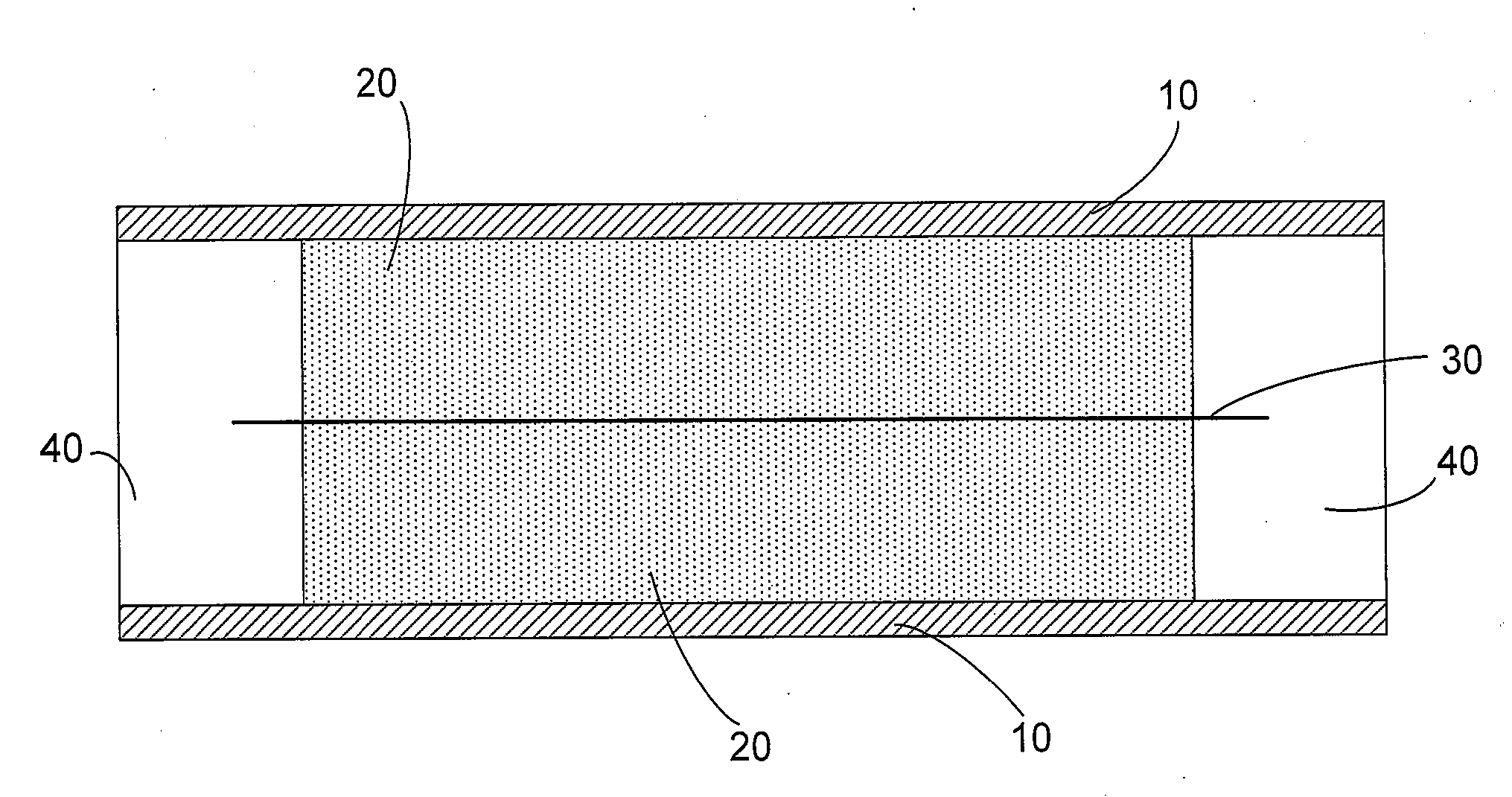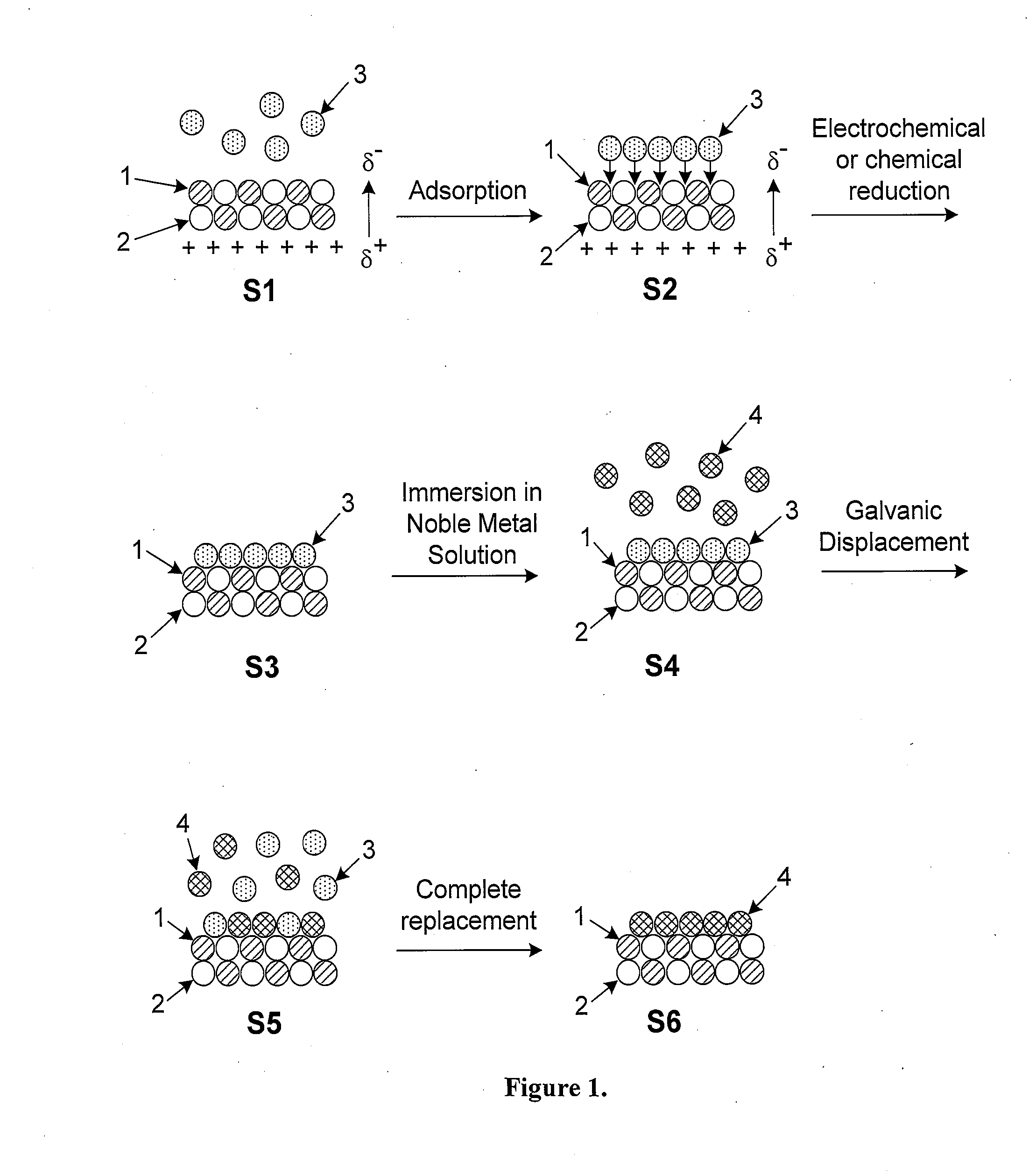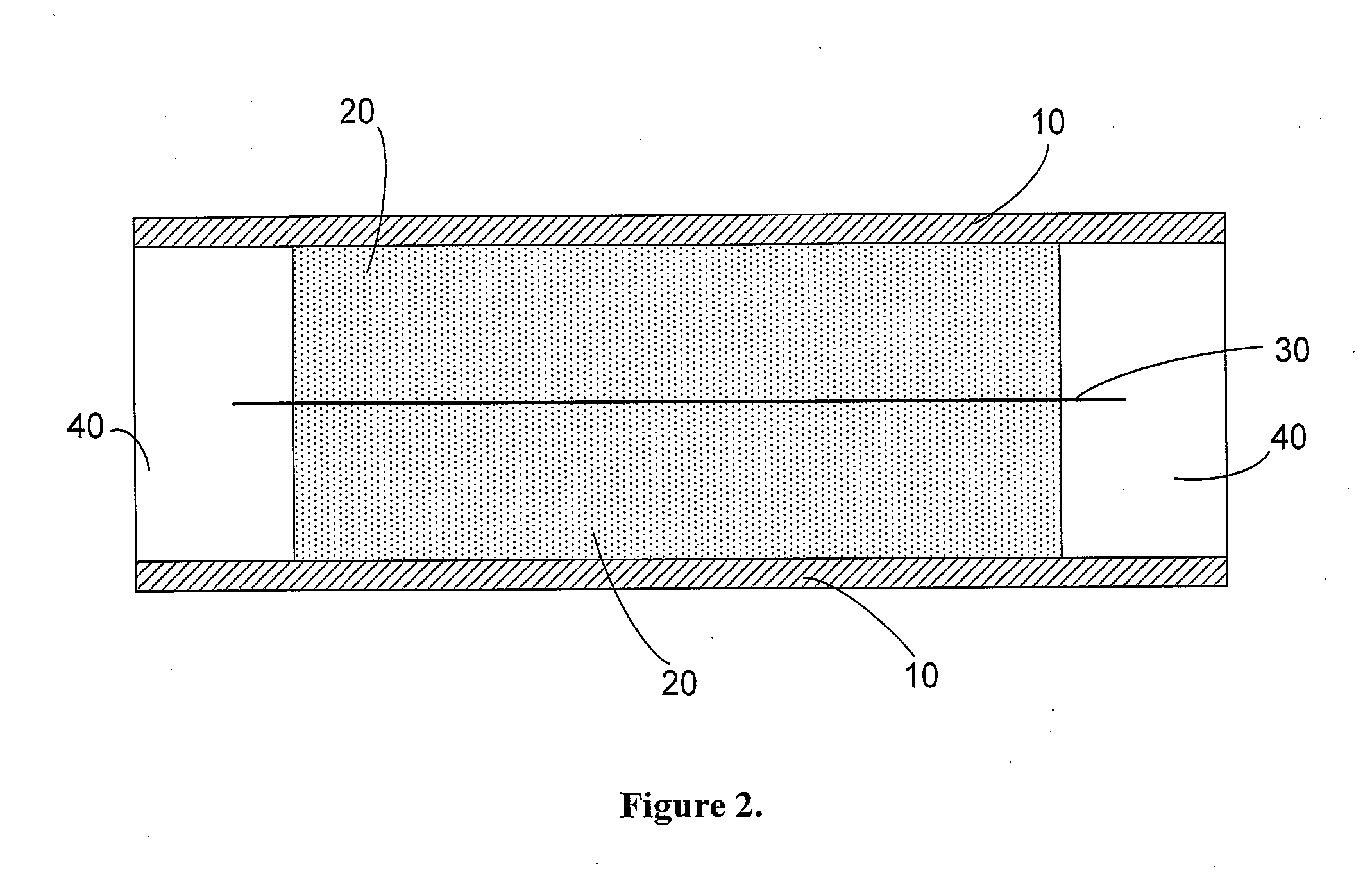Electrodes Synthesized from Carbon Nanostructures Coated with a Smooth and Conformal Metal Adlayer
a technology of carbon nanostructures and conformal metals, applied in the direction of electrolytic capacitors, cell components, transportation and packaging, etc., can solve the problems of limited charge storage capabilities, inability to achieve high power density, and difficulty in accessing intrapore surfaces of ions in the electrolyte, etc., to facilitate deposition and facilitate the effect of deposition
- Summary
- Abstract
- Description
- Claims
- Application Information
AI Technical Summary
Benefits of technology
Problems solved by technology
Method used
Image
Examples
Embodiment Construction
[0020]These and other objectives of the invention will become more apparent from the following description and illustrative embodiment which are described in detail with reference to the accompanying drawings. Similar elements in each figure are designated by like reference numbers and, hence, subsequent detailed descriptions thereof may be omitted for brevity. In the interest of clarity, the following terms are defined as provided below.
ACRONYMS
[0021]ALD: Atomic Layer Deposition[0022]CVD: Chemical Vapor Deposition[0023]MWNT: Multi-Walled NanoTube[0024]PVD: Physical Vapor Deposition[0025]SWNT: Single-Walled NanoTube
DEFINITIONS
[0026]Adatom: An atom located on the surface of an underlying substrate.[0027]Adlayer: A layer of atoms adsorbed to the surface of a substrate.[0028]Bilayer: Two layers of atoms or molecules which occupy all available surface sites on each layer and covers the entire surface of the substrate.[0029]Catalysis: A process by which the rate of a chemical reaction is...
PUM
| Property | Measurement | Unit |
|---|---|---|
| pressure | aaaaa | aaaaa |
| diameter | aaaaa | aaaaa |
| diameter | aaaaa | aaaaa |
Abstract
Description
Claims
Application Information
 Login to View More
Login to View More - R&D
- Intellectual Property
- Life Sciences
- Materials
- Tech Scout
- Unparalleled Data Quality
- Higher Quality Content
- 60% Fewer Hallucinations
Browse by: Latest US Patents, China's latest patents, Technical Efficacy Thesaurus, Application Domain, Technology Topic, Popular Technical Reports.
© 2025 PatSnap. All rights reserved.Legal|Privacy policy|Modern Slavery Act Transparency Statement|Sitemap|About US| Contact US: help@patsnap.com



